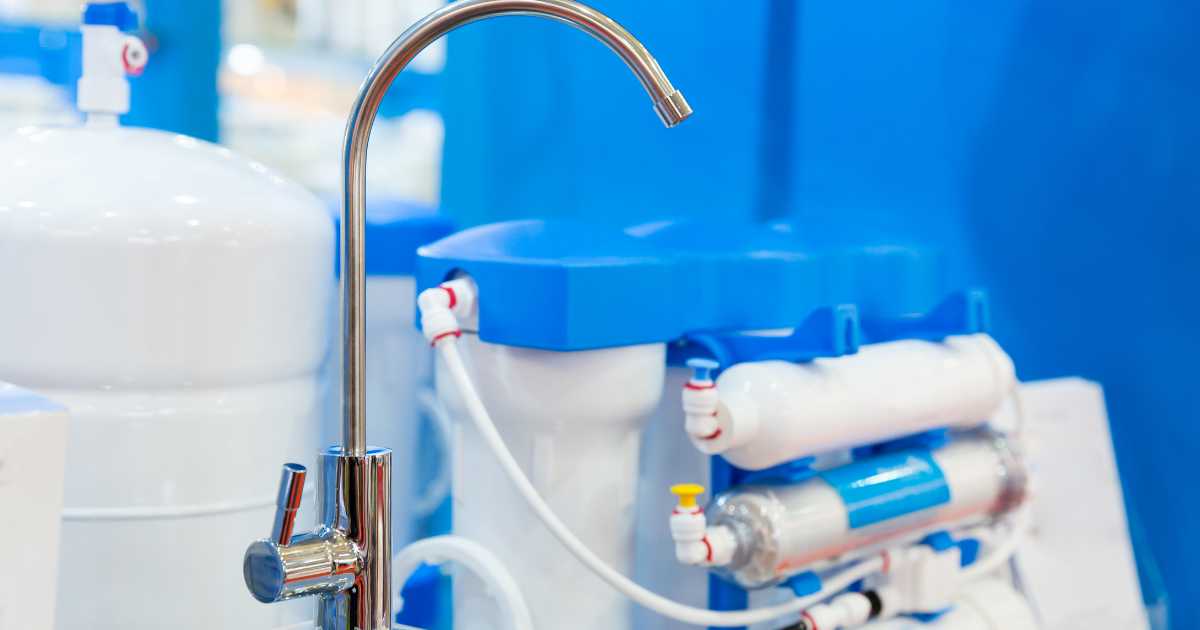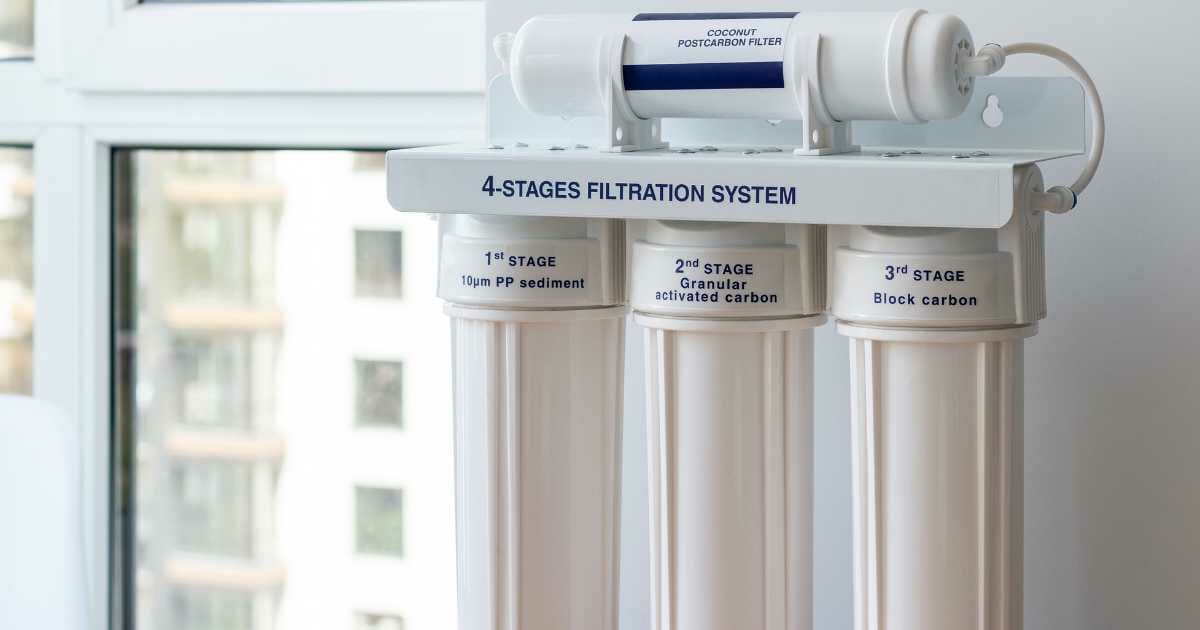We like to share product recommendations with you and hope you like them! Just to make you aware Water Filter Data may collect a small share of sales or other compensation from the links on this page.
A water filter works by blocking the passage of solid particles with a screen (or filter) while allowing the liquid to flow through.
Clean water is important for survival. Water is a natural resource we use every day and it can be prone to contamination. The water we use should be free of contaminants, especially if we’re going to ingest it.
Different forms of sterilization have been discovered to produce safer water, and we can now have access to a pure water supply. Filtration is one of the methods used for purifying water.
Different purification techniques operate on the principle of filtration.
In this post, we’ll explore the types of water filters and answer the question, “how does a water filter work?”
What is a Water Filter?

A water filter is a device that separates contaminants or unwanted particles from water. It is a physical separation technique, and it exists in different forms.
The point of water filtration is to get a higher quality of water, meaning water free of smell, taste, and impurities. These impurities include bacteria, viruses, sediments, iron particles, scum-forming minerals, and more.
There are several types of water filters, and they differ in their mechanism of operation.
How Does a Water Filter Work?
These filters are classified based on how they operate or what they filter.
Mechanical Filters
Mechanical filters are the simplest forms of water filters, and they are a popular choice. Mechanical filters are also called sieves, and they are tools with tiny spaces or meshes that act as a barrier for large, unwanted particles in water.
Mechanical filters are used in many places, including homes, schools, and labs, and can appear in different forms. The mechanical filter can be a simple hand sieve or a more complex ceramic filter. The point is they all operate with the same principle, mesh size.
There are mechanical filters that are used in microbial capacities for the separation of microorganisms.
The effectiveness of a mechanical filter depends on the micron rating or mesh size – the larger the micron rating, the less effective for smaller particles. Filters with a micron rating of 5 can sieve out large molecules we can see. Filters with a micron rating of 1 will separate particles we can’t see. A micron rating of 0.5 can separate microbial contaminations or cysts.
Mechanical filters don’t require special force or chemical alteration – smaller particles pass through the mesh while larger ones don’t.
Absorption (Activated Carbon)
Some filters operate on the principle of absorption instead of the mesh size. These filters can retain many particles due to the compound present within them. Most filters that operate on absorption are packed with activated carbon.
Activated carbon has a high absorbent property due to its structure. The large internal surface area provides space for tiny particles to flow into and get trapped.
Most filters at home have granular-activated carbon (GAC). Meanwhile, larger operations like industries use block elements of activated carbon.
Water flowing through the filter goes through the activated carbon, and the particles within get stuck in the carbon. It is an effective separation technique for removing particles and sediments but won’t remove heavy metals, sodium, nitrates, and microorganisms.
The activated carbon runs out of space after prolonged use and can’t be washed. You will need to replace the filter, which isn’t cost-effective.
Sequestration
Sequestration operates on the principle of isolation. Food-grade polyphosphate is used to isolate the minerals that cause hardness in water. The process is more inhibitory than preventive.
The polyphosphate traps the scum-forming minerals within that water and prevents them from forming scales. Note that the process doesn’t remove the hardness from the water; it just prevents scale from forming.
If you want to soften water, you’ll have to use another method which we’ll soon discuss.
Ion Exchange
Ion exchange involves swapping chemical molecules to get soft water. This method is used for treating water with scale-forming constituents like magnesium and calcium ions.
Hard water contains magnesium and calcium ions that form whitish scales on surfaces when heated. It is possible to replace the scale-forming ions with non-forming ions like hydrogen and sodium.
Ion exchange resins are used in this filtration process and produced in beads. These beads are called zeolite beads, and they contain sodium ions. When these beads enter the water, they cause the magnesium or calcium molecules to break into ions.
The beads then attract the calcium or magnesium ions and replace them with sodium ions.
This filtration method is more effective for treating hard water compared to sequestration. Sodium resins are not used in drinking water due to health concerns. Also, the sodium that is added to the water is a form of contamination, so we can’t say the water is purified.
Reverse Osmosis

Reverse osmosis is one of the most effective principles for water filtration. It produces water with the highest purity – removing 98% of the impurities. Also, reverse osmosis can remove minerals from water.
Reverse osmosis backtracks the principle of osmosis. In osmosis, particles move from a region of lower concentration to a higher concentration through a semi-permeable membrane and in the direction of the concentration gradient.
However, in reverse osmosis, particles move from a region of higher concentration to a lower concentration, which is against the concentration gradient. Water containing impurities has a higher concentration and is forced against a semi-permeable membrane.
The membrane prevents other particles except for water molecules from passing. Pressure is required in this technique because the particles are going against the concentration gradient, and the particles need to get across the membrane.
Reverse osmosis is an efficient technique because it is effective and energy-saving. You don’t need electricity for a RO system – all you need is the water pressure in your pipes. Also, the RO system filters everything out, including minerals.
Other Water Filters
Most water filters combine two or more from our list above. The reason is that each filtration method has its disadvantages, so combining them covers its drawbacks.
Coffee Machine Water Filters
Coffee machines use water, but their requirement differs from the filtration standard. Coffee beans need a blend of minerals in the water to bring out their flavor and taste. Using a normal filter for a coffee machine will affect the taste.
Coffee machines have special filters that keep out impurities but retain healthy minerals.
Inline Water Filters
Inline water filters are installed directly into the water line before your tap or faucet. This filter uses different mechanisms to ensure your water supply is odorless, tasteless (no chlorine taste), and free of microbes.
Drop-In Filters
These filters are designed for water filter housing. Drop-in filters can be any type of paper, ceramic, carbon, etc. most mechanical filters have housings.
Distillation
Distillation is another common method for filtering water, and it involves using heat. Distillation kills microbes and separates impurities with a higher boiling point than water.
Distillation involves heating water until it becomes steam, collecting the steam, and condensing back to liquid. Through the process, microbes will be killed, and heavy metals or impurities with higher boiling points will be left behind.
Distillation is quite effective and easy to perform, but it has limitations. Impurities with a lesser boiling point than water will also be vaporized and collected.
Conclusion
Clean water is a crucial part of our survival. Our water supply is prone to contamination, and it is best to take precautions. For example, you can safeguard your water supply with a filtration system. In this post, we’ve looked at different types of filters and how they work.
There are different types of water filters, and each has its operation mechanism. Some of these filters combine multiple mechanisms of operation for better effect.



